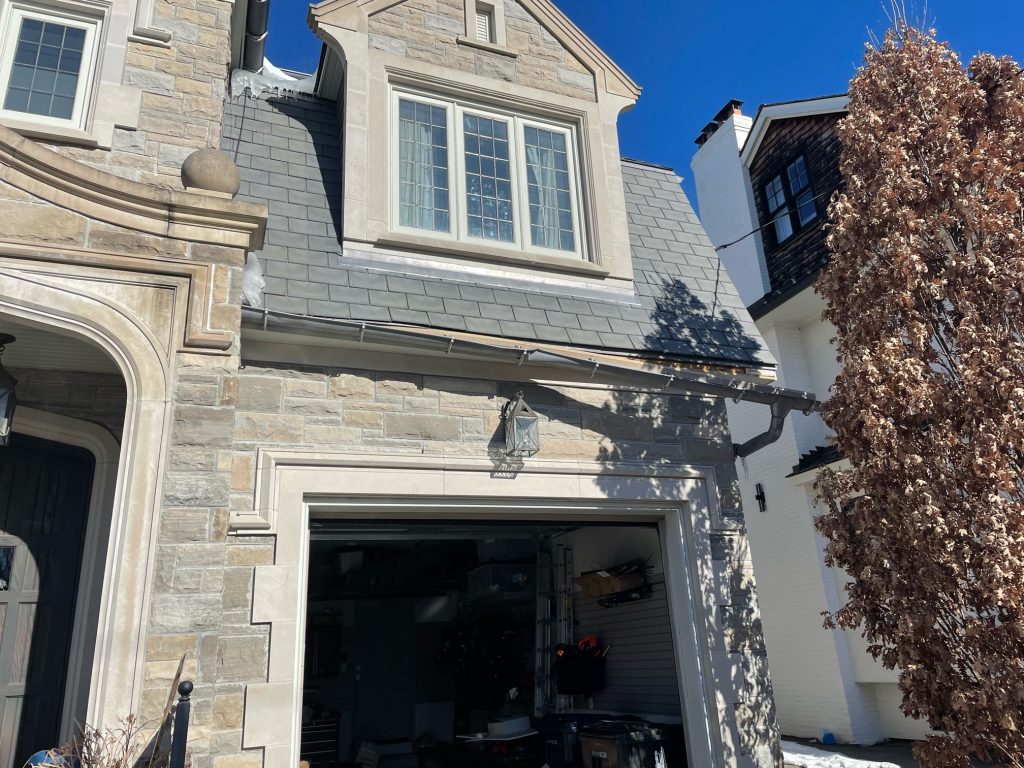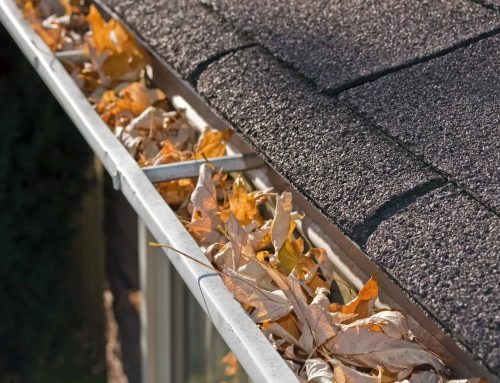When you look up at your home’s roofline, those horizontal channels running along the edge might not catch your attention—until water starts pooling around your foundation or icicles form dangerous curtains in winter. Eavestroughs, commonly called gutters, are your home’s first line of defense against water damage, quietly directing thousands of gallons of rainwater and snowmelt away from your property each year. Understanding how long these essential components last and what you can do to extend their lifespan can save you thousands of dollars in repairs and protect your most valuable investment.
The question of eavestrough longevity isn’t straightforward—it depends on multiple factors including material quality, installation methods, maintenance practices, and the unique challenges that Toronto’s climate presents to exterior home components. While some homeowners might get decades of reliable service from their gutters, others find themselves dealing with repairs or replacements much sooner than expected.
Understanding Eavestrough Lifespan by Material
Aluminum Eavestroughs
Aluminum gutters dominate the Toronto market for good reason. These lightweight yet durable systems typically last 15 to 25 years when properly maintained. The material’s natural resistance to rust gives it a significant advantage in our climate, where freeze-thaw cycles and road salt can accelerate corrosion. However, aluminum’s softer nature means it’s more susceptible to denting from falling branches—a common concern given Toronto’s mature tree canopy.
The quality of aluminum varies significantly between manufacturers. Thicker gauge aluminum (0.027 inches or higher) provides better longevity than thinner alternatives commonly found in big-box stores. Professional-grade aluminum eavestroughs often include protective coatings that enhance their weather resistance and color retention.
Steel Eavestroughs
Galvanized steel gutters, once the standard choice, typically last 10 to 18 years in the GTA climate. While steel offers superior strength against impact damage, it’s more prone to rust, especially at joints and areas where the protective coating has been compromised. This is why we do not install steel eavestroughs. The harsh Toronto winters, combined with road salt that becomes airborne, can accelerate the corrosion process.
Newer steel options include galvalume (aluminum-zinc coated steel) which extends lifespan to 20-25 years by combining steel’s strength with enhanced corrosion resistance.
Vinyl Eavestroughs
Vinyl gutters present an interesting option for budget-conscious homeowners, typically lasting 8 to 15 years. While they won’t rust or dent, Toronto’s temperature extremes pose unique challenges, which is why we do not install or recommend these types of eavestroughs. The material becomes brittle in extreme cold and can crack during sudden temperature changes—a regular occurrence during our transitional seasons. UV exposure during hot summers can also cause fading and material degradation over time.
Copper Eavestroughs
At the premium end, copper gutters can last 50 to 100 years with proper installation and maintenance. While the initial investment is substantial, copper’s longevity and distinctive appearance make it attractive for heritage homes and high-end properties throughout Toronto’s established neighborhoods. The material develops a natural patina that actually enhances its weather resistance over time.
Factors That Affect Eavestrough Lifespan in Toronto
Climate Considerations
Toronto’s continental climate presents unique challenges for eavestrough systems. Our region experiences significant temperature swings, from summer highs reaching 30°C to winter lows dropping below -20°C. This constant expansion and contraction stresses joints and can cause materials to fatigue over time.
The freeze-thaw cycle is particularly destructive. When water trapped in gutters freezes, it expands with tremendous force, potentially cracking materials or forcing joints apart. Ice dams, common on Toronto homes with insufficient attic insulation, can cause gutters to pull away from fascia boards or overflow, leading to water damage.
Precipitation Patterns
The GTA receives approximately 830mm of precipitation annually, with intense summer storms capable of overwhelming undersized or poorly maintained eavestrough systems. These sudden deluges test gutter capacity and can reveal weaknesses in installation or maintenance.
Spring snowmelt presents another challenge, often occurring rapidly and potentially overwhelming systems still partially blocked by winter debris or ice.
Environmental Factors
Toronto’s urban forest, while beautiful, creates ongoing challenges for eavestrough maintenance. Maple, oak, and other deciduous trees drop leaves that can quickly clog systems, while evergreens contribute needles and small branches year-round. The city’s mature tree canopy also increases the risk of impact damage during storms.
Air quality considerations include road salt residue that can accelerate corrosion, particularly on properties near major thoroughfares. Industrial emissions and urban pollutants can also contribute to faster degradation of certain materials.
Installation Quality
Professional installation significantly impacts eavestrough lifespan. Proper slope ensures adequate drainage—typically 1/4 inch per 10 feet toward downspouts. Inadequate slope causes standing water, which promotes corrosion and provides breeding grounds for mosquitoes and bacteria.
Fastener spacing and type matter enormously. Gutters hung too far apart will sag under load, while inappropriate fasteners may not provide adequate support during Toronto’s challenging weather conditions. Professional contractors understand local building requirements and use fastening systems designed for our climate.
Essential Maintenance Practices for Longevity
Regular Cleaning Schedule
Consistent cleaning forms the foundation of eavestrough longevity. Toronto homeowners should clean gutters at least twice annually—once in late spring after tree pollination and again in late fall after leaves have dropped. Properties with significant tree coverage may require additional cleanings.
The cleaning process involves removing all debris, flushing systems with water to check drainage, and inspecting for damage. Pay particular attention to downspout connections, where clogs commonly occur. Use a garden hose to test water flow and identify any areas where drainage seems sluggish.
Professional cleaning services understand the safety requirements and have specialized equipment to handle multi-story homes safely. They can also identify potential problems during routine maintenance visits.
Inspection and Early Problem Detection
Regular inspections help catch problems before they become expensive repairs. Look for signs of sagging, which indicates inadequate support or water accumulation. Check joints for separation, which can lead to leaks and water damage. Examine fasteners for looseness or corrosion.
During winter months, monitor for ice dam formation, which can indicate inadequate attic insulation or ventilation—problems that stress eavestrough systems. Document any issues with photos and dates to track problem progression.
Prompt Repair Strategies
Address minor issues immediately to prevent major problems. Loose fasteners should be tightened or replaced before they allow sections to pull away from the house. Small holes can be patched with appropriate sealants, but multiple repairs in the same section may indicate the need for replacement.
Joint repairs require particular attention. Failed caulking should be completely removed and replaced with high-quality sealants designed for exterior use and temperature extremes. Some joints may require mechanical reinforcement if repeated failures occur.
Gutter Guard Considerations
Gutter guards offer protection against debris accumulation but aren’t maintenance-free solutions. Various styles work better in different situations—mesh guards handle most leaf debris but may allow smaller particles through, while solid covers with slots can handle heavy debris loads but may require periodic cleaning of the covers themselves.
Consider your specific situation: homes with primarily large-leaf trees benefit from different guard styles than those dealing with pine needles or seed pods. Quality guards designed for Toronto’s climate can significantly reduce maintenance requirements while extending eavestrough life.

Warning Signs Your Eavestroughs Need Attention
Visible Damage Indicators
Sagging sections indicate either inadequate support or accumulated debris and standing water. This problem typically worsens rapidly once it begins, as the sagging creates low spots that collect more debris and water.
Rust stains on siding below gutters suggest overflow or leakage, while white streaking may indicate consistent overflow conditions. Peeling paint on gutters themselves often signals moisture infiltration behind the coating.
Separated joints are particularly concerning as they allow water to escape, potentially damaging fascia boards, soffits, and even foundation areas. These repairs should be prioritized to prevent more extensive damage.
Performance Issues
Water spilling over gutters during moderate rainfall suggests capacity problems or blockages. This overflow can damage landscaping, create erosion problems, and potentially affect foundation drainage.
Pooling water around the foundation after rain indicates the eavestrough system isn’t effectively directing water away from the structure. This can lead to basement flooding, foundation settling, and other serious structural issues.
Icicle formation along gutters during winter often indicates heat loss from the house combined with poor drainage. While some icicle formation is normal in Toronto winters, extensive ice buildup suggests problems requiring attention.
Structural Concerns
Loose or missing fasteners compromise the entire system’s integrity. These problems often worsen during storms or under the weight of snow and ice. Regular inspection can identify fastener problems before they lead to complete section failures.
Fascia board damage behind gutters indicates long-term moisture exposure, potentially requiring extensive repairs beyond just eavestrough replacement. This type of damage often remains hidden until significant deterioration has occurred.
Professional Services and When to Call Experts
Routine Maintenance Services
Professional eavestrough maintenance provides value beyond simple cleaning. Experienced contractors can identify developing problems, make minor adjustments to improve performance, and provide documentation of system condition for insurance purposes.
Many Toronto contractors offer seasonal maintenance programs that include spring and fall cleanings, minor repairs, and system inspections. These programs often cost less than emergency repair calls and help maintain manufacturer warranties.
Complex Repair Situations
Some repairs require professional expertise and specialized equipment. Multi-story homes present safety challenges that professionals are equipped to handle safely. Complex joint repairs, fascia board replacement, and system modifications typically require contractor involvement.
Professional repair services also understand local building codes and permit requirements for major modifications. They carry appropriate insurance coverage for work on your property and typically guarantee their repairs.
Complete System Replacement
When multiple sections show significant wear, or when repairs become frequent, complete replacement may be more cost-effective than continued repairs. Professional contractors can assess your specific situation and provide realistic timelines for replacement versus continued maintenance.
System upgrades during replacement can improve performance and longevity. This might include increasing gutter size for better capacity, adding downspouts for improved drainage, or incorporating gutter guards into the new installation.
Protecting Your Investment in the Greater Toronto Area
Your home’s eavestrough system represents a significant investment in property protection, and with proper care, that investment can serve you well for decades. Toronto’s challenging climate demands attention to detail and consistent maintenance, but homeowners who prioritize eavestrough care typically enjoy trouble-free performance and avoid costly water damage repairs.
Regular maintenance, prompt attention to developing problems, and working with experienced local contractors when professional services are needed form the foundation of eavestrough longevity. Consider your specific situation—tree coverage, home height, and budget constraints—when developing your maintenance strategy.
If you’re experiencing eavestrough concerns or would like a professional assessment of your system’s condition, Ontario Downspout Service brings decades of experience serving GTA homeowners. Our team understands the unique challenges Toronto’s climate presents and can help develop a maintenance strategy that protects your investment while fitting your budget and schedule.








